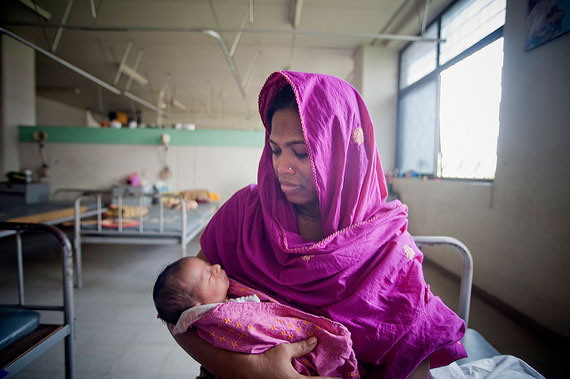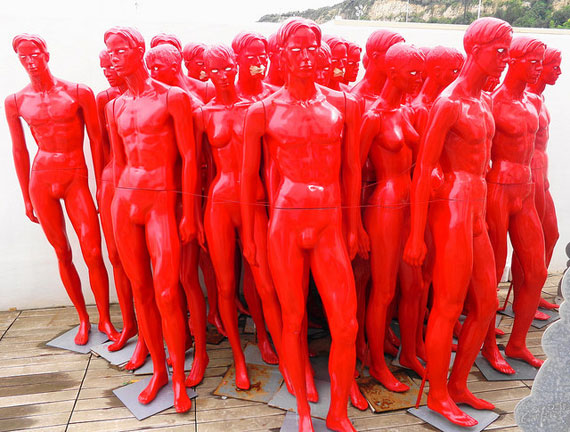Have you ever seen one of those pictures of a small child starving in Africa and have something tug at your heart? Have you ever seen a cover on a magazine and picked it up just because of that photo? Have you ever bought a product because of a picture of someone else using the product and how happy they looked? If you said yes to any of these, don’t worry; you’re not alone. Advertising is a $200 billion a year business . . . and most of it relies on photographs that have emotional impact.

Photo by United Nations Photo; ISO 400, f/2.8, 1/125-second exposure.
So the obvious question is, “What is it that transforms a two-dimensional piece of paper into a three-dimensional image that yanks at our heartstrings?”
Emotional intimacy is what touches people and, more often than not, causes them to take action. Look at it this way—the worse thing a parent can do to a child is to NOT let that child know they are loved. Likewise, a photograph that does not evoke emotions or feelings in the viewer has robbed the viewer. Your job as is not just to “document” or “point and shoot.” Your job is to touch the hearts of those who have not experienced what you have. Remember, what comes from the heart goes to the heart.
You have to realize that all art seeks to express emotion, and you as a photographer are also an artist. No offense to craftsmen around the world, but they have a pattern, and the results are always known. If you connect “A” to “B” to “C,” you have a clock, for example; you always have a clock. There is no doubt in your mind that you are making a clock. The artist, on the other hand, may start out looking for joy, but may end up with something that reminds us of sorrow or pain. Obviously, not every viewer will have the same emotions that you had when taking the photograph, but as long as they feel something, that’s OK.
Color is often overlooked or not talked about in great detail in the world of photography. Have you ever noticed someone walking down the street with clothes that were loud and out of place? It almost gives you a headache just thinking about it. But why is that? Different colors invoke different emotions. Some are positive, and some are negative, depending on the viewer’s perspective.
Here are some colors and their perceived emotional values:
Red
Positive: sense of power, strength, action, passion, sexuality
Negative: anger, impatience, violence, forcefulness, revenge

Photo by Goggins World; ISO 80, f/3.5, 1/125-second exposure.
Yellow
Positive: caution, brightness, intelligence, joy
Negative: criticism, laziness, cynicism

Photo by Macarena Constanza; ISO 200, f/5.6, 1/500-second exposure.
Blue
Positive: tranquility, peace, love, comfort, harmony
Negative: fear, coldness, depression

Photo by Jae C.; ISO 100, f/4.5, 1/250-second exposure.
Orange
Positive: courage, confidence, warmth, energy
Negative: ignorance, inferiority, slowness

Photo by Mike Monaghan; ISO 100, f/1.4, 1.6-second exposure.
Purple
Positive: royalty, sophistication, religious
Negative: bruised, beaten, foreboding

Photo by Oli4.D; ISO 800, f/3.5, 1/40-second exposure.
Green
Positive: money, health, nature, growth, soothing
Negative: envy, greed, guilt, jealousy

Photo by James Blann; ISO 200, f/8.0, 1/320-second exposure.
Black
Positive: dramatic, classy, committed, serious
Negative: evil, darkness, death, coldness

Photo by gato-gato-gato; ISO 1250, f/1.4, 1/60-second exposure.
White
Positive: pure, fresh, goodness, heavenly
Negative: blind, cold, bitter, distant

Photo by Shawn Kent; ISO 200, f/2.8, 1/6000-second exposure.
If you want to understand emotion in photography, then you need to understand color as an emotion. If you’re ready to take your work to the next level, try shooting 40 shots of each of the colors listed above. The subject matter is not important, but you must shoot half those shots as positive and half as negative.
Trying to create emotion in photography often means getting inside your viewer’s head. Different people have different life experiences, thus they view the world differently. If you want your work to reach as many people as possible, then you have to be able to view things from as many different perspectives as possible. Take the challenge to see if you really understand color. Once you do, your world of photography will never be the same.
About the Author:
Award winning writer / photographer Tedric Garrison has 30 years experience in photography (better-photo-tips.blogspot.com). As a Graphic Art Major, he has a unique perspective. His photo eBook “Your Creative Edge” proves creativity can be taught. Today, he shares his wealth of knowledge with the world through his website.
Like This Article?
Don't Miss The Next One!
Join over 100,000 photographers of all experience levels who receive our free photography tips and articles to stay current:






Your first paragraph spoke volumes to me. Thank you. Colors have always been an inspiration to me.
This is such a great article. So much information is provided in a very simple way. New to photography, I’ve been trying to understand the effects of colour in photography.
There are many websites on the subject. Of all those I’ve visited, this is the most practical and neat presentation. The explanation of colours here have encouraged me to understand the nuances of the subject which is otherwise very hard to teach. Thank you very much.
hi do you know any photographers that specialise in portraying emotions through colour because i am doing artist reasearch for GCSE photography.